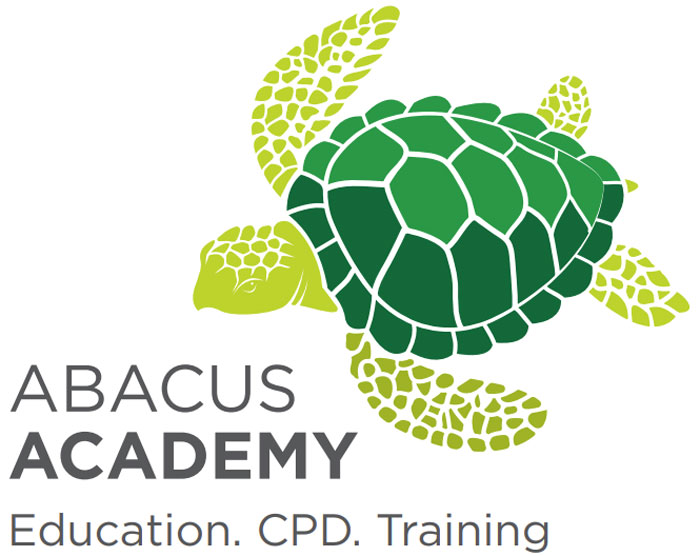Moving and handling
Access & hoisting
When thinking about how to access a bath, compatibility is key.
Certain types of hoist, sling configuration and the wrong bath can make this difficult.
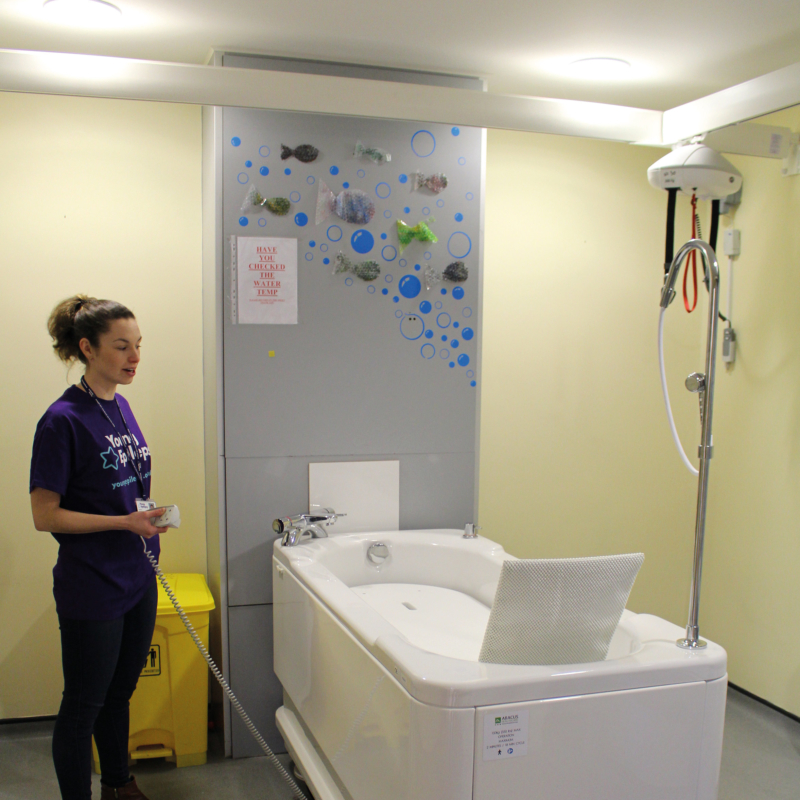
Hoists
A mobile hoist, although a versatile and readily available piece of equipment in most community equipment stores, does not have the required reach and combined stability to be able to position a person into a bath. Although many height adjustable baths, (such as the Gemini 2000 bath), can accommodate the base of a mobile hoist, the way in which a mobile hoist functions and maintains its balance makes this a very challenging way of trying to hoist your client into a bath and maintain their safety whilst being hoisted. Mobile hoists also have limitations on height which means that often users cannot get their feet clear of the sides of the bath to be able to enter.
Such compatibility problems can be overcome using a Ceiling Track Hoist (CTH), such as the Shuttle 200, which offer a compatible solution for accessing a height adjustable care bath. They do not require the floor space of a mobile hoist and a user can be lifted and positioned at the desired lowering point over the bath or integral platform.
A CTH installer will require a physical survey of the home to ensure that the ceiling height will be adequate to support clearance of a hoisted user into the bath, and that the physical walls or ceiling joists can support the weight of a person and the hoist carriage and track. Once those details have been confirmed a CTH provides an easy and compatible way to allow your client to access a bath easily with carer support of 1 or 2 persons dependent on your risk assessment.
Ease of positioning
Hoisting a user in and out of the bath can be a challenge, however a height adjustable bath and platform, such as the Gemini 2000, provides an easy access solution for a hoisted user and their carer. When used along with a CTH a carer can position their client easily on the integral platform to support changing or lowering into the bath. The reach of a CTH would also enable a carer to lower their client directly into a bath easily and quickly.
Slings
Often when choosing and configuring slings to support hoisting in/out of a bath, the need to position correctly in a bath can be overlooked in a handling plan. If the sling you are using has adjustable straps and can be adjusted for that transfer to elevate the client’s feet, it should be at least a consideration. It is important to remember that one sling attachment configuration does not suit all purposes. Risk assessments and subsequent handling plans should reflect this need to reduce risk and improve flexibility.
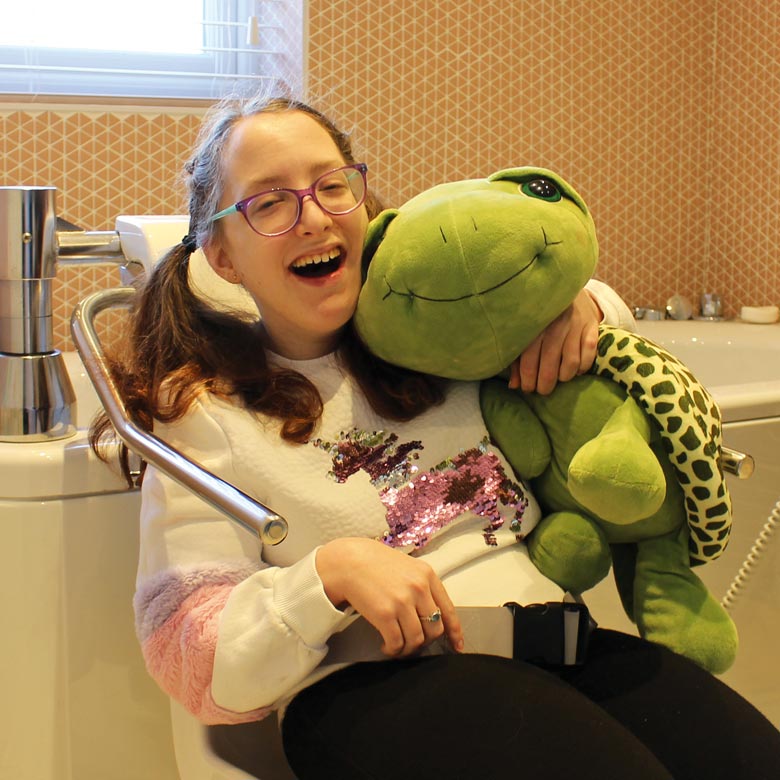
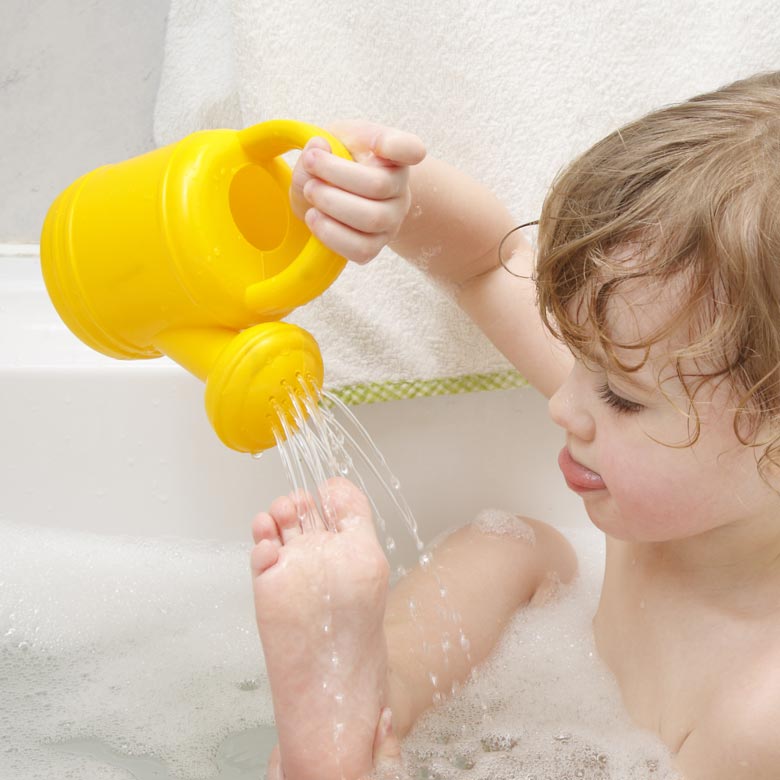
Carer handling
Carer handling is integral to our risk assessments and handling plans when assessing how our clients can access a bathing facility safely. There is also ever-growing pressure on local authorities to reduce costs and care agencies are having to cut down call times.
Hence, the more effective and efficient a handling plan can be whilst reducing risk, has never been more important.
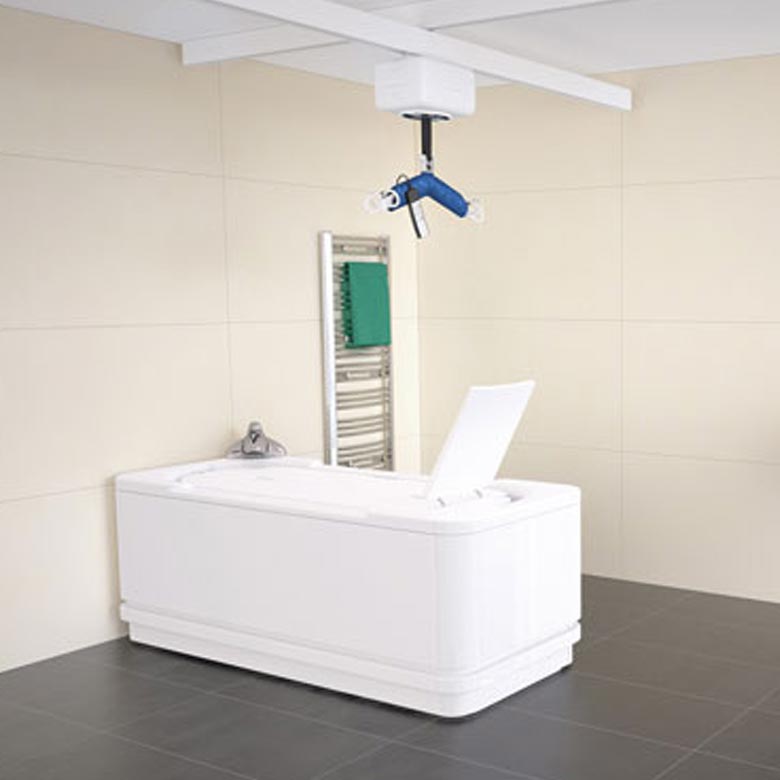
The integral platform, for example, as found on the Abacus Gemini 2000 can reduce call times for carers significantly by cutting down on the number of transfers needed. The integral platform allows for a carer to hoist their client directly from a wheelchair or a bed straight onto the platform. The platform allows for a carer to support changing of their client and subsequent lowering into the water without the need for further hoisting. Through this system configuration, following bathing a carer can elevate their client out of the bath on the platform, to dry and change them. This eliminates the need for hoisting onto other surfaces to do so, saving time for the carer and improving the overall experience for the client because of a reduced need to be handled. This is more likely to lead to a more relaxed experience for the client and will be less stressful for the carer.
Carer posture
Repetitive movements and what is referred to as ‘static posture’ can lead to lower back musculoskeletal problems for carers if not investigated or accounted for in risk assessments. The height adjustable features of baths such as the Abacus Aries 1700, allow carers to maintain a more supported and upright posture when assisting their clients with bathing. This avoids the hunched over static posture which carers can often find themselves in when assisting clients with personal care activities. This can also be said for the Abacus Gemini 2000 with integral platform. The platform is elevated to a comfortable height for a carer to support changing their client without adopting the hunched over static posture, which can cause so many problems for carers when repeated daily.
Carer comfort
Risk assessments and handling plans often work by chipping away at multiple issues and by doing so, improve the overall situation for client and carer alike. Height adjustable baths and CTHs can contribute to this by making the carer’s job easier, reducing repetition, static postures and strain in care tasks.
Provision of height adjustable baths and ceiling track hoists reflects not just a legal obligation by an employer to maintain the safety of its staff, but desire to ensure their overall wellbeing and sense of accomplishment.
Single handed care
In reducing carer strain and repetition, products such as the Shuttle 200 CTH and the height adjustable baths with integral platforms make it more possible to reduce the numbers of carers required to support a bathing task. This is more important than ever with local authority budgets continually under strain and the care sector as a whole having the highest turnover of employees in any industry sector.
Consequently, the ability to reduce the number of carers needed at a call does not just make practical sense with regards to availability, but financial sense as well.
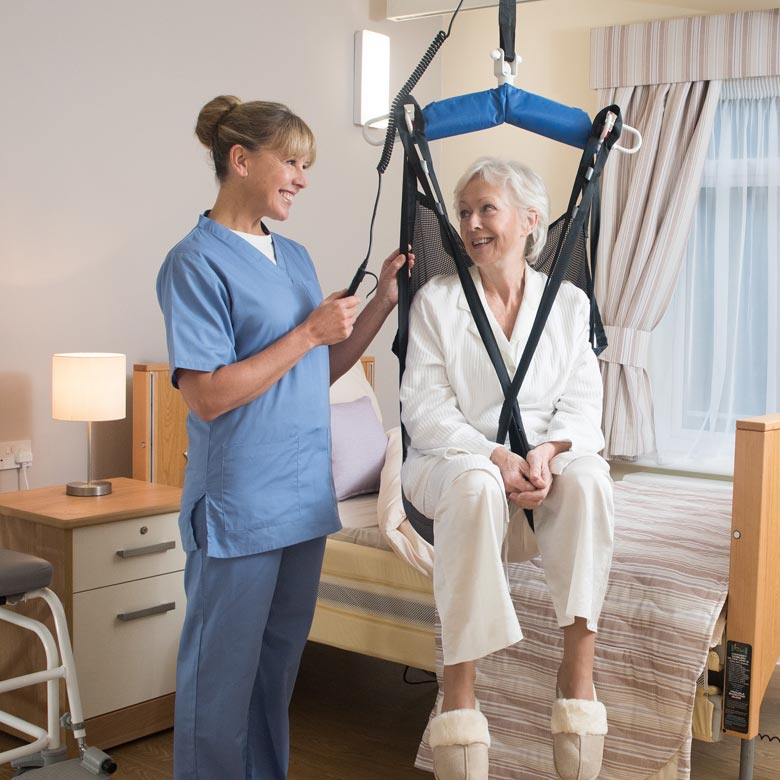
From an overall moving and handling standpoint, provision of height adjustable baths and CTHs work very well together if planned out and risk assessed correctly. They have the potential to reduce the number of carers required to carry out a task by reducing strain, the risk of static postures and the number of transfers required to carry out moving and handling operations in this area. This makes it easier to source and maintain carers, maintain carer safety, and ensure the bathing experience remains what it should be for the client.
Compatibility issues such as access for mobile hoists can tie agencies into risk assessing a need for a second carer, due to the amount of manoeuvring often required in what can be a limited space. CTHs reduce the friction and subsequent overall load for a carer making it much easier for a single carer to hoist a user in and out of the bath. They also make it simpler for a single carer to align a user in the correct position in the bath. This is because the spreader bar of the hoist can be easily positioned with the user directly over the required lowering point.
CTHs do not have to contend with the biomechanical friction of the weight of the mechanism against the floor, or manoeuvring, therefore making it easy to move. This can be further improved by provision of motorised units that can help with moving a heavier person.
Height adjustable baths and platforms make it possible for carers to work in more comfortable positions for prolonged periods, without requiring a second person for support. Additionally, by centralising care tasks you can reduce the number of transfers required to complete care tasks. This makes it much easier for a single carer to turn a client to dry and change them in one spot.
Consequently, this makes it more possible than ever to reduce the number of carers from a standard 2 person to a single-handed care approach.
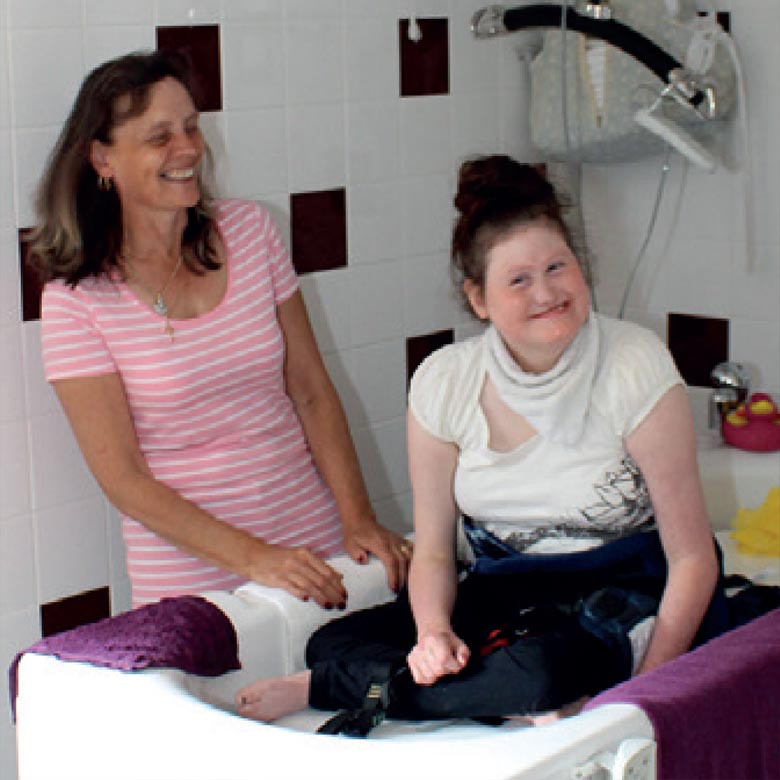
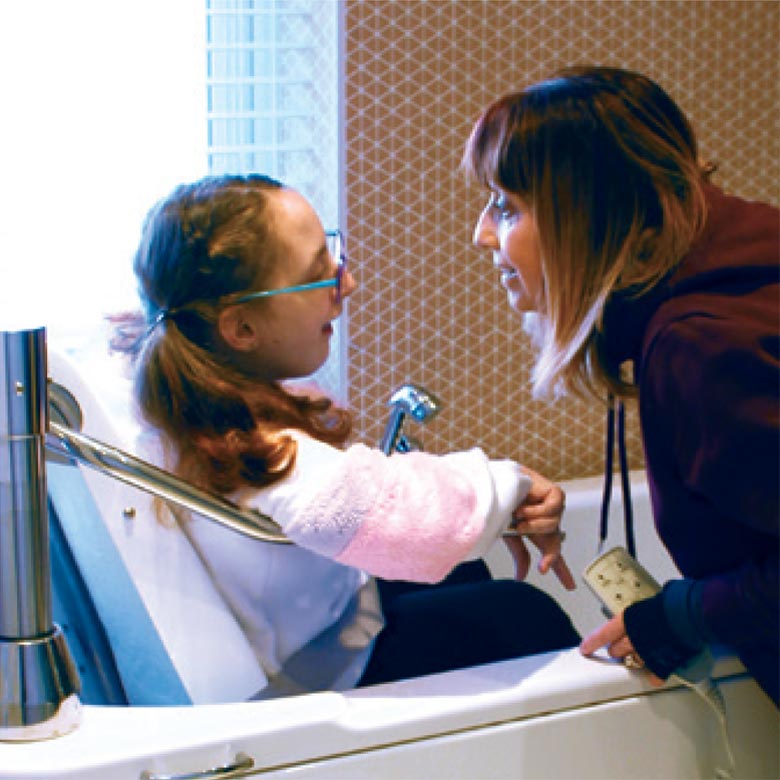
For a pdf of this information and a CPD certificate click here.
For bespoke CPD education or any queries,
call the Abacus Academy on:
01527 400024
info@abacushealthcare.co.uk
